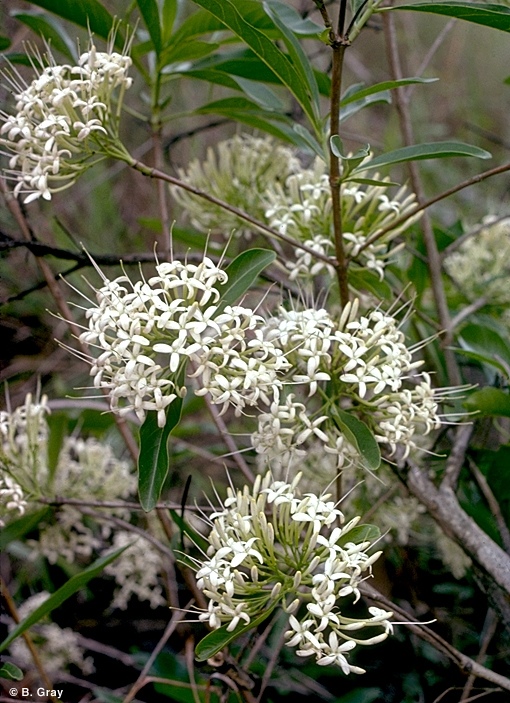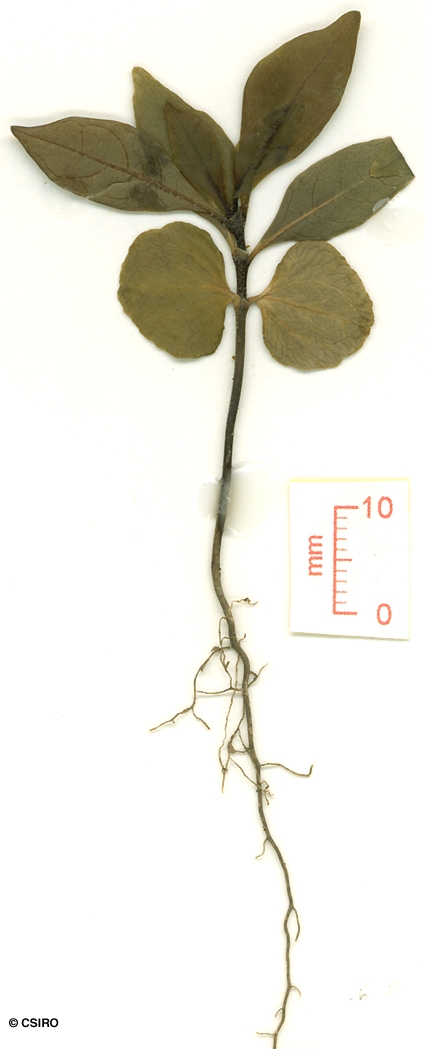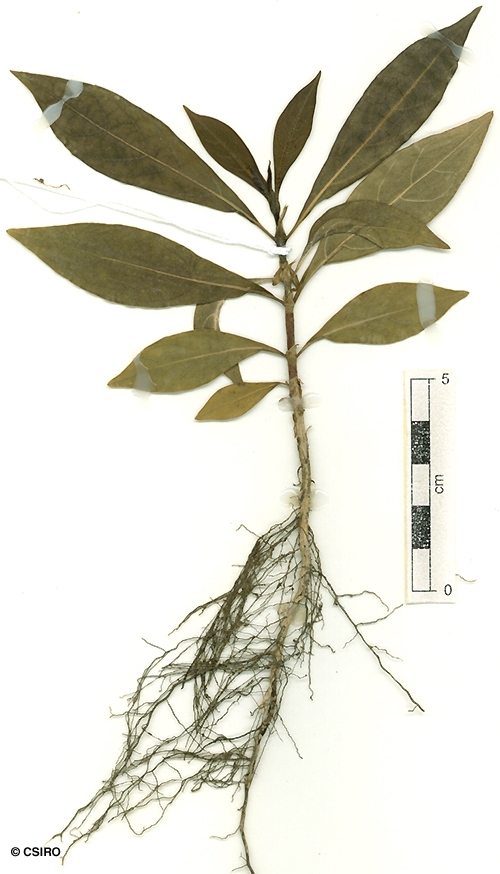Australian Tropical Rainforest Plants - Online edition
Pavetta australiensis Bremek.






Bremekamp, C.E.B. (1934) Repertorium Specierum Novarum Regni Vegetabilis 37 : 124. Type: Queensland, Cape York, 12 Nov. 1849, MacGillivray s.n.; holo: K.
Pavetta
Usually flowers and fruits as a shrub about 1-5 m tall.
Stipules hairy, completely encircling the twigs, each stipule ending in two linear or aristate points. Younger twigs clothed in short, white or translucent, crispate hairs. Twig pith pale green. Leaf blades about 10-20 x 3.5-9 cm. Lateral veins slightly depressed on the upper surface curving but not forming definite loops inside the blade margin.
Pedicels about 5-10 mm long. Calyx lobes reduced to small teeth, calyx tube (hypanthium) about 1.5-2.5 mm long. Corolla tube about 7-17 mm long, lobes about 3-8 mm long. Anthers about 3.5-5 mm long. Outer surface of the ovary clothed in tortuous, white hairs. Styles about 2.5-3.5 mm long.
Cotyledons orbicular, about 10-15 x 13-15 mm. First pair of true leaves stipulate, stipules interpetiolar, leaf margins smooth. At the tenth leaf stage: leaf blade obovate with hairs on the underside along the midrib and main lateral veins. Stipules about 1 mm long, hairy, interpetiolar, triangular and abruptly acuminate at the apex encircling the stem. Stem sparsely hairy. Seed germination time 139 to 341 days.
Endemic to Australia (?), occurs in CYP, NEQ, CEQ and southwards as far as north-eastern New South Wales. Altitudinal range in CYP and NEQ from near sea level to 1000 m. Grows as an understory plant in some of the drier rain forests, monsoon forest, vine thickets and beach forest but also found in disturbed areas in upland rain forest.
A shrub well known in horticulture for the perfumed white flowers and easy culture.





